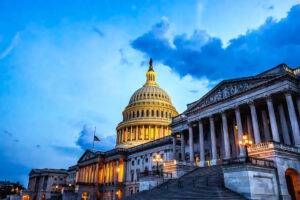
Revised March 30, 2020
MOST EMPLOYERS REQUIRED TO PAY SICK LEAVE IF ABSENCE RELATED TO CORONAVIRUS (IR-2020-57)
The US has more than 65,000 (changing by the hour) people diagnosed with Coronavirus (COVID-19). Many more have symptoms, are quarantined for exposure, and are seeking medical testing. As a start to helping those affected (part one of two or maybe three stimulus bills according to Speaker Pelosi), Congress passed a sick leave bill.
Tax practitioner planning. Apologies for the length of these abbreviated facts on the new sick leave provisions. There are more details. This is a summary.
FOR YOU AND YOUR BUSINESS CLIENTS
The Families First Coronavirus Response Act (FFCRA), signed into law Mar. 18, 2020, requires certain employers to provide employees with paid sick leave or expanded family and medical leave for specified reasons related to COVID-19.
New. These provisions become effective April 1, 2020 and apply through Dec. 31, 2020, according to DOL.
Generally, the FFCRA provides that employees of covered employers are eligible for:
- Two weeks (up to 80 hours) of paid sick leave at the employee’s regular rate of pay where the employee is unable to work because the employee is quarantined (pursuant to Federal, State, or local government order or advice of a health care provider), and/or experiencing COVID-19 symptoms and seeking a medical diagnosis; or
- Two weeks (up to 80 hours) of paid sick leave at two-thirds the employee’s regular rate of pay because the employee is unable to work because of a bona fide need to care for an individual subject to quarantine (pursuant to Federal, State, or local government order or advice of a health care provider), or to care for a child (under 18 years of age) whose school or child care provider is closed or unavailable for reasons related to COVID-19, and/or the 1 employee is experiencing a substantially similar condition as specified DOL and IRS; and
- Up to an additional 10 weeks of paid expanded family and medical leave at two-thirds the employee’s regular rate of pay where an employee, who has been employed for at least 30 calendar days, is unable to work due to a bona fide need for leave to care for a child whose school or child care provider is closed or unavailable for reasons related to COVID-19.
Note. Small businesses with fewer than 50 employees may qualify for exemption from the requirement to provide leave due to school closings or child care unavailability if the leave requirements would jeopardize the viability of the business as a going concern.
Covered Employers — fewer than 500 employees. The paid sick leave and expanded family and medical leave provisions of the FFCRA apply to certain public employers, and private employers with fewer than 500 employees.
Eligible Employees. All employees of covered employers are eligible for two weeks of paid sick time for specified reasons related to COVID-19. Employees employed for at least 30 days are eligible for up to an additional 10 weeks of paid family leave to care for a child under certain circumstances related to COVID-19.
Qualifying Reasons for Leave. Under the FFCRA, an employee qualifies for paid sick time if the employee is unable to work (or unable to telework) due to a need for leave because the employee:
- Is subject to a Federal, State, or local quarantine or isolation order related to COVID-19;
- Has been advised by a health care provider to self-quarantine related to COVID-19;
- Is experiencing COVID-19 symptoms and is seeking a medical diagnosis;
- Is caring for an individual subject to an order described in (1) or self-quarantine as described in (2);
Note. For these four categories, a full-time employee is eligible for 80 hours of leave, and a part-time employee is eligible for the number of hours of leave that the employee works on average over a two-week period; or
- Is caring for a child whose school or place of care is closed (or child care provider is unavailable) for reasons related to COVID-19.
Note. For this category, a full-time employee is eligible for up to 12 weeks of leave (two weeks of paid sick leave followed by up to 10 weeks of paid expanded family & medical leave) at 40 hours a week, and a part-time employee is eligible for leave for the number of hours that the employee is normally scheduled to work over that period.
Under the FFCRA, an employee qualifies for expanded family leave if the employee is caring for 2 a child whose school or place of care is closed (or child care provider is unavailable) for reasons related to COVID-19. Remember, there is an exemption for this requirement if the employer has fewer than 50 employees.
Calculation of Pay
For leave reasons (1), (2), or (3): employees taking leave are entitled to pay at either their regular rate or the applicable minimum wage, whichever is higher, up to $511 per day and $5,110 in the aggregate (over a 2-week period).
For leave reason (4): employees taking leave are entitled to pay at 2/3 their regular rate or 2/3 the applicable minimum wage, whichever is higher, up to $200 per day and $2,000 in the aggregate (over a 2-week period).
For leave reason (5): employees taking leave are entitled to pay at 2/3 their regular rate or 2/3 the applicable minimum wage, whichever is higher, up to $200 per day and $12,000 in the aggregate (over a 12-week period).
How Does the Employer Pay for the New Sick Leave and Family Leave Mandates?
Paid Sick Leave Credit. For an employee who is unable to work because of Coronavirus quarantine or self-quarantine or has Coronavirus symptoms and is seeking a medical diagnosis, eligible employers may receive a refundable sick leave credit for sick leave at the employee’s regular rate of pay, up to $511 per day and $5,110 in the aggregate, for a total of 10 days.
Child Care Leave Credit. For an employee who is unable to work because of a need to care for a child whose school or child care facility is closed or whose child care provider is unavailable due to the Coronavirus, eligible employers may receive a refundable child care leave credit. This credit is equal to two-thirds of the employee’s regular pay, capped at $200 per day or $10,000 in the aggregate. Up to 10 weeks of qualifying leave can be counted towards the child care leave credit.
Note. Eligible employers are entitled to an additional tax credit determined based on costs to maintain health insurance coverage for the eligible employee during the leave period.
Recovering the Employer’s Cost of Providing Leave
Eligible employers who pay qualifying sick or child care leave will be able to retain an amount of the payroll taxes equal to the amount of qualifying sick and child care leave that they paid, rather than deposit them with the IRS.
The payroll taxes that are available for retention include withheld federal income taxes, the employee share of Social Security and Medicare taxes, and the employer share of Social Security and Medicare taxes with respect to all employees. If there are not sufficient payroll taxes to cover the cost of qualified sick and child care leave paid, employers will be able file a request for an accelerated payment from the IRS. The IRS says it will process these requests for refunds in two weeks or less.
Example. If an eligible employer paid $5,000 in sick leave and is otherwise required to deposit $8,000 in payroll taxes, including taxes withheld from all its employees, the employer could use up to $5,000 of the $8,000 of taxes it was going to deposit for making qualified leave payments. The employer would only be required under the law to deposit the remaining $3,000 on its next regular deposit date.
Example. If an eligible employer paid $10,000 in sick leave and was required to deposit $8,000 in taxes, the employer could use the entire $8,000 of taxes in order to make qualified leave payments and file a request for an accelerated credit for the remaining $2,000.
Things That We Don’t Know
⇨ Equivalent credits are available to self-employed individuals based on “similar circumstances”. How are the credits calculated and when and how are they refunded/paid to the self-employed individual? A new form?
⇨ How does the employer report to the IRS the amount retained from payroll tax deposits? A revised Form 941?
⇨ How does the employer apply for a refund under the new expedited procedure? A new form?
⇨ When qualifying for the under 50 and under 500 employee rule, how does the employer count the number of employees? Do we count full time equivalent employees (FTEs), as we do in ACA’s employer mandate?
See the IRS Coronavirus Tax Relief page and the Department of Labor website for more details and updates.
©2020 Sharon Kreider
Recent Stories
Next Up...
- |
- TaxByte
- |
- TaxByte





